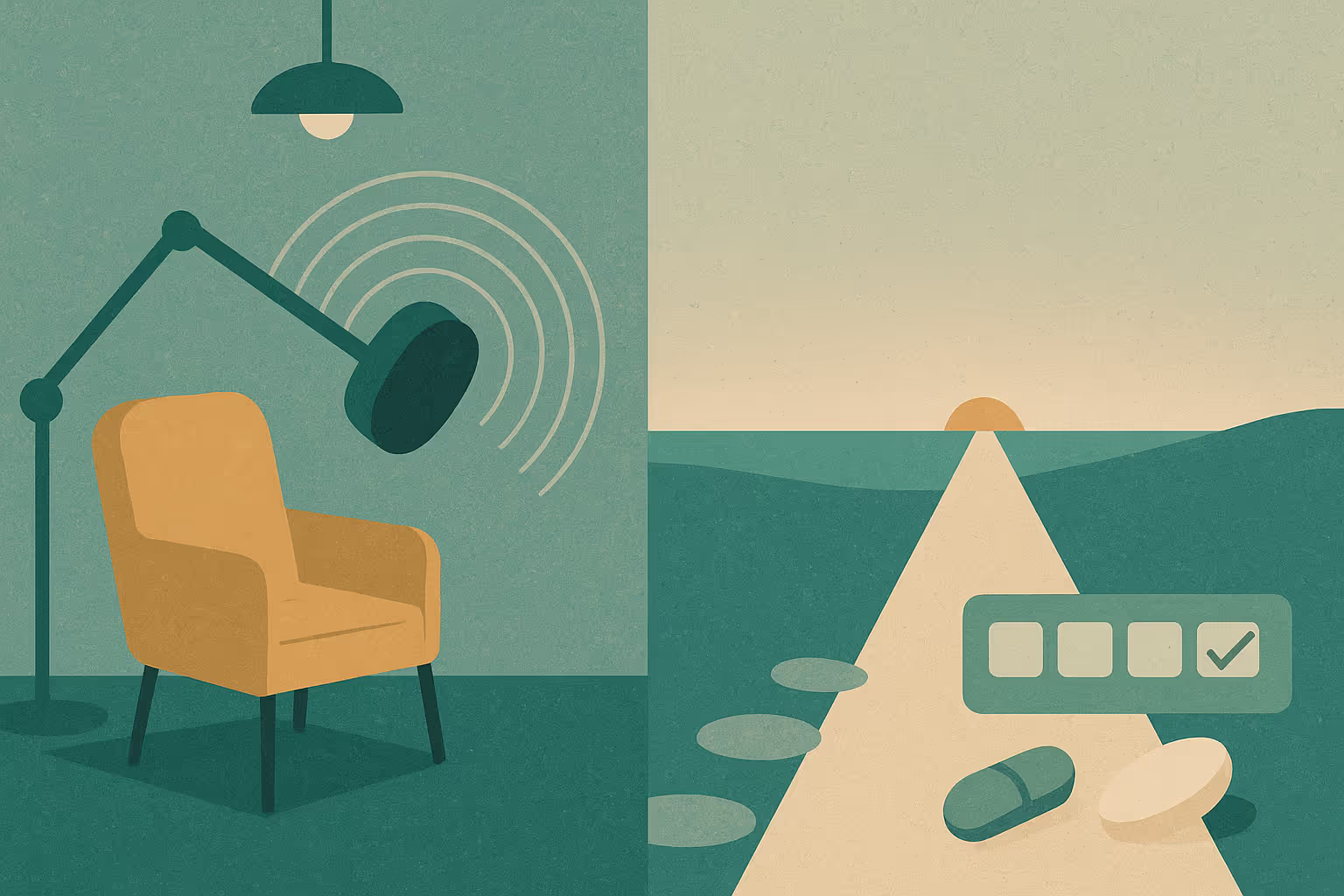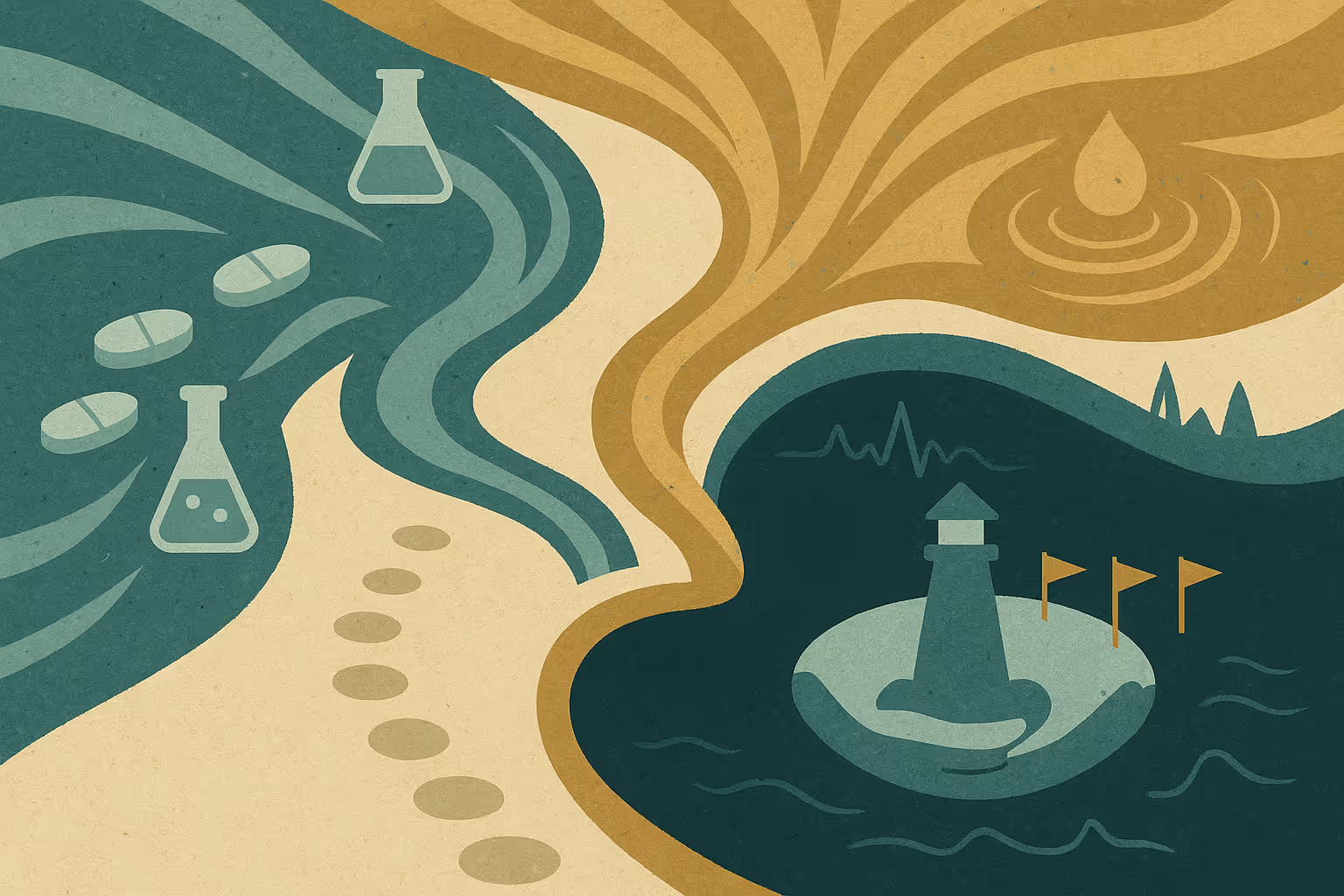What Ketamine Treatment Feels Like — And How To Talk to Patients About What They Can Expect
When a patient first hears the phrase ketamine therapy, their reaction often lands somewhere between curiosity, skepticism and fear. For many, the word ketamine carries complicated associations — anesthetic, club drug, veterinary contexts. For clinicians, this moment can feel delicate: how do you explain an experience that’s both clinical and profoundly human?
Dr. Ben Yudkoff, Chief Medical Officer and Co-Founder of Lumin Health, puts it this way: “most people don’t know how they’ll respond — either to the potential psychedelia or, importantly, to the possibility of feeling better.” The clinician’s role, he said, is not to resolve that uncertainty, but to hold space for it.
Below is a guide for framing the ketamine treatment experience in a way that honors that tension — rooted in clinical clarity, tempered with compassion, and accessible to both the seasoned clinician and the provider just beginning to explore collaboration with a Spravato clinic.
Subjective & Clinical Dimensions of Ketamine Experiences
For patients, the ketamine therapy experience unfolds in two intertwined layers: the subjective (what it feels like) and the clinical (what happens to the brain and beyond).
Clinically, sessions are structured, measured, and safe. Patients arrive, are screened, have vitals checked, and receive dosing in a private room under direct supervision. But subjectively, the experience is often described as something harder to name: “lighter,” “distant,” “like watching my own thoughts,” “as if I could finally breathe.”
Providers can normalize this duality by framing it as both expected and temporary:
“During the session, you may feel space open up between you and your thoughts. That’s not something wrong — that’s your brain in a state we monitor closely and guide you through. You can use this window to view your emotions and thoughts from new perspectives, and work to gain clarity on how those thoughts really affect your day-to-day life.”
This framing — simple, precise, and respectful to the curiosity & awe that the treatment engenders— helps patients feel less like participants in an experiment and more like active partners in a safe, observable process.
Dissociation during ketamine as a monitored state
Dr. Yudkoff describes the dissociative state as “a change in perspective, a change in how we experience control.” This change in perspective is the neurobiological window through which ketamine exerts its antidepressant effect — reducing rumination, loosening rigid thought patterns, and allowing patients to observe their inner world from a gentle, safer distance.
Many referring providers find it helpful to de-mystify the experience by saying something along the lines of:
“You may feel detached or dreamlike for a while. That’s expected and it’s carefully monitored. You’ll have clinicians nearby the entire time.”
This simple, affirming language helps de-dramatize the experience. It situates dissociation not as a side effect but as a temporary, supervised state — a meaningful part of how esketamine/ketamine for depression can help the brain reset.
Grounding strategies before, during and after ketamine therapy
As Dr. Yudkoff emphasized, the most powerful support clinicians can offer is presence. “Hold space,” he said. “The goal isn’t to remove anxiety before treatment — it’s to stay with it while the patient discovers what unfolds. Just as in life, certain steps need to be taken with uncertainty.”
Here are strategies you can share with patients to ground during sessions:
- Breath: “If the sensations feel strong, focus on breathing slowly and evenly.”
- Anchors to the world around: “Notice the texture of the blanket, the sound of music, or your feet against the recliner.”
- Trust: “Remember, you’re not alone — someone is watching over you, and you can speak up anytime.”
- The experience is always temporary.
- Stay curious – at each step, “look around the corner:” check in with yourself, engage the experience, notice what’s happening within you and outside you.”
These micro-moments of reassurance remind patients that grounding is not about pulling away from the experience — it’s about staying safely within it.
What sets the Lumin Health clinic environment apart
In the workshop, Yudkoff often returned to the idea that people who come to Lumin Health rarely come on their best day. Safety, then, is not just about monitoring vitals, it’s just as much about providing a safe space to feel, accept the moment, and lean in. At Lumin Health, sessions take place in quiet, private rooms. The lights are dim, music is optional, and vitals are checked gently. Clinicians remain close, but not intrusive — present enough to reassure, distant enough to let the experience unfold.
When describing this to patients, try language like:
“The room is calm and private. You’ll recline, listen to quiet music, and be checked on regularly. It’s medical care, but it’s also meant to feel peaceful.”
This description turns an unfamiliar environment into something emotionally legible.
Ketamine treatment aftercare supports
What happens after ketamine dosing can be just as meaningful as what happens during. Many patients emerge quiet or contemplative. Some feel subtle relief — colors sharper, thoughts clearer. Others feel fatigued or tender.
Encourage patients to:
- Rest for the remainder of the day.
- Journal, draw, or record impressions without judging them.
- Bring reflections into their next session, when the brain is more open to new learning, and when new ideas are top of mind
For referring clinicians, this is where partnership deepens. Dr. Yudkoff reminded providers, “The treatment is not designed to threaten existing relationships, but rather augment the progress you’ve already made with your patient.” Your ongoing care remains the constant through which these experiences are interpreted and integrated.
Talking Points for Clinicians about ketamine therapy
When discussing what ketamine treatment feels like, you might use these phrases as touchstones:
- “This is not just a ‘trip,’ but can be thought of as a brief, monitored shift in awareness, one that might help you see things differently”
- “You’ll have a private room, continuous supervision, and time afterward to rest and re-orient.”
- “If something feels overwhelming, you can speak up. We adjust, pause, or use grounding strategies together.”
- “What you feel is temporary — and often, what follows is a bit of mental quiet or emotional lightness. The feeling is curious and can be engaging.”
- The best way to protect against difficult “trips” is to be willing to explore, accepting that recovery can come through the experience of changes in experience.”
Each of these statements does quiet work: reducing stigma, naming uncertainty, and restoring a sense of agency to the patient.
The Core Message: Safety Is Presence in Ketamine Treatment
As Yudkoff put it near the end of the session, “Patients don’t need us to be certain — they need us to be comfortable with the space of not being sure.” The clinician’s steadiness communicates safety even when the patient is entering uncharted territory.
When you talk about the ketamine therapy experience, you’re not describing a procedure, you’re preparing someone to meet themselves differently. Your tone — the cadence, the pauses, the reassurance — can be as therapeutic as the medicine itself.
Heading 1
Heading 2
Heading 3
Heading 4
Heading 5
Heading 6
Lorem ipsum dolor sit amet, consectetur adipiscing elit, sed do eiusmod tempor incididunt ut labore et dolore magna aliqua. Ut enim ad minim veniam, quis nostrud exercitation ullamco laboris nisi ut aliquip ex ea commodo consequat. Duis aute irure dolor in reprehenderit in voluptate velit esse cillum dolore eu fugiat nulla pariatur.
Block quote
Ordered list
- Item 1
- Item 2
- Item 3
Unordered list
- Item A
- Item B
- Item C
Bold text
Emphasis
Superscript
Subscript







